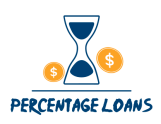When borrowing money, it’s crucial to look beyond the advertised interest rate and consider all fees and charges to understand the total cost of a loan.
This article sheds light on how both interest rates and additional fees contribute to the overall cost of borrowing, providing examples, calculations, and tips to help borrowers make informed decisions.

Understanding Interest Rates:
The interest rate on a loan is the percentage of the principal charged by the lender for the use of its money. The rate can be fixed or variable and is often the most focused-on aspect when comparing loans.
The Role of Additional Fees:
Additional fees can significantly increase the cost of a loan. These may include origination fees, application fees, late payment fees, prepayment penalties, and annual charges.
Example Calculation:
Consider a $10,000 personal loan with a 5% interest rate and a 3-year term. The simple interest cost is $1,500. However, if there’s an origination fee of 2% ($200) and an annual service fee of $50, the total cost rises to $1,800.
Comparing Loans:
When comparing loans, it’s not enough to just look at the interest rate. Calculate the Annual Percentage Rate (APR), which includes both the interest rate and fees, to get a true sense of the loan’s cost.
Tips for Evaluating Loan Costs:
- Understand All Fees: Ask the lender for a complete list of all fees associated with the loan.
- Calculate the APR: Use online calculators to determine the APR, which provides a more comprehensive view of the loan’s cost.
- Consider the Loan Term: A longer loan term might have lower monthly payments but could result in higher total interest and fees over time.
- Read the Fine Print: Be aware of any hidden fees or penalties that could increase the cost of the loan.
Negotiating Loan Terms:
Don’t hesitate to negotiate loan terms. Some lenders might be willing to waive or reduce certain fees, especially if you have a good credit score or existing relationship with them.
The Impact of Loan Fees on Different Types of Loans:
The effect of fees can vary depending on the type of loan. For instance, mortgage loans might have higher upfront fees, while auto loans might have higher late payment penalties.
Conclusion:
The total cost of a loan encompasses more than just the interest rate. By understanding and calculating the impact of additional fees, borrowers can make more informed decisions and potentially save a significant amount of money over the life of the loan.
- What Are The Advertising Trends For Percentage Loans?Benefits of Percentage Loans as an Advertising Tool Percentage loans have become increasingly popular in the advertising landscape due to their numerous benefits. These loans offer a percentage of the total loan amount as a commission to the advertiser, making them an attractive option for businesses looking to increase their marketing reach. In this article,… Read more: What Are The Advertising Trends For Percentage Loans?
- Percentage Loans And The Insurance Market.Benefits of Percentage Loans in the Insurance Market How Percentage Loans Revolutionize the Insurance Market Percentage loans have emerged as a groundbreaking financing option within the insurance market. These loans provide unique advantages for policyholders and insurers alike. By allowing individuals and businesses to secure funds based on a percentage of their insurance policy, these… Read more: Percentage Loans And The Insurance Market.
- Percentage Loans And The Sports Market.The Role of Percentage Loans in Financing Sports Ventures Financing is a crucial aspect of any sports venture, and one method that has gained popularity in recent years is the use of percentage loans. These loans are a type of financing in which the lender receives a percentage of the sporting organization’s revenue or profits… Read more: Percentage Loans And The Sports Market.
- Percentage Loans And The Financial Services Market.Role of Percentage Loans in the Financial Services Market Percentage loans play a significant role in the financial services market, offering individuals and businesses access to much-needed funds for various purposes. These loans are a type of borrowing where interest is calculated as a percentage of the total loan amount. They are widely used and… Read more: Percentage Loans And The Financial Services Market.
- What Are The Benefits Of Using Percentage Loan Calculators?How percentage loan calculators can simplify loan calculations Introduction: Loan calculations can be complicated and time-consuming, especially when you have to factor in various elements such as interest rates, loan terms, and payment schedules. However, with the advent of percentage loan calculators, borrowers now have access to a valuable tool that simplifies the process and… Read more: What Are The Benefits Of Using Percentage Loan Calculators?
